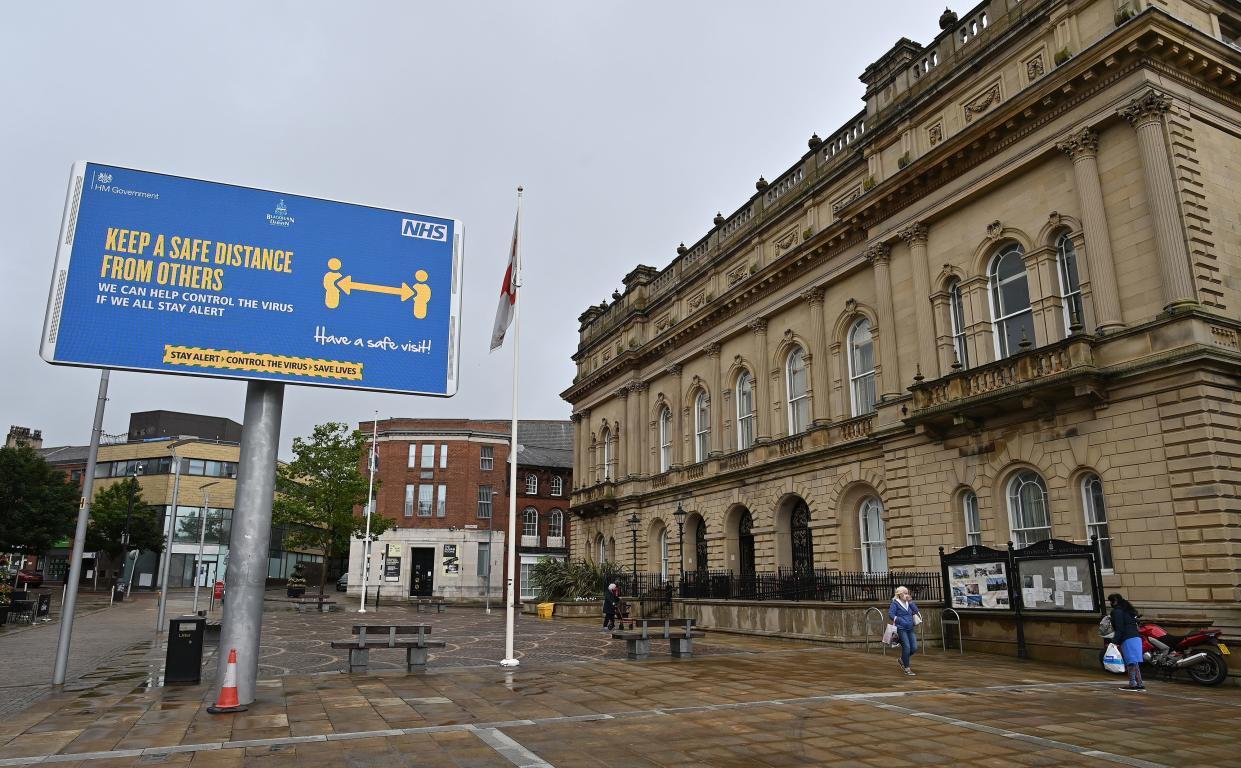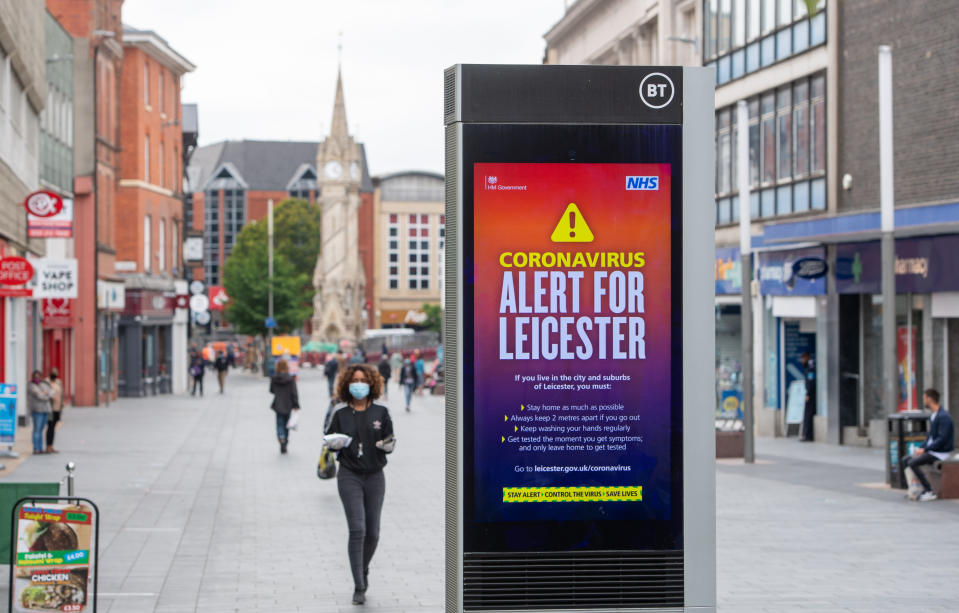Coronavirus: What is an 'area of intervention' and where are they in the UK?

The towns of Luton and Blackburn have been designated ‘areas of intervention’ as part of the government’s watchlist for coronavirus.
But what exactly does the term mean for areas that are put on the watchlist and what are the different levels on the list?
What is an ‘area of intervention’?
Public Health England’s watchlist — part of its weekly surveillance report — includes three categories that local authorities can be placed in: areas of concern; areas for enhanced support and areas of intervention.
An area of intervention is the highest level and is described as an area where there is a “divergence from the measures in place in the rest of England because of the significance of the spread, with a detailed action plan in place, and local resources augmented with a national support.”
The watchlist is based on the weekly rate of cases in different areas and the infection rate, combined with elements like local healthcare and plans in place.
Once somewhere becomes an ‘area of intervention’, an action plan is put in place and the local authority will receive extra support.
The system is hoped to help target the worst-affected areas to avoid a return to a full lockdown.
Which places have currently been named areas of intervention?
Luton in Bedfordshire as well as Blackburn and Darwen in Lancashire have both been designated ‘areas of intervention’ in PHE’s latest surveillance report.
They join Leicester and neighbouring Oadby and Wigston, which were subjected to the country’s first local lockdown last month.

Does that mean they automatically have to go into lockdown?
Not necessarily. The measure may have been taken in Leicester, Oadby and Wigston but being an area of intervention doesn’t mean somwhere automatically has to be locked down.
Instead, a range of measures can be introduced, including: closing businesses and venues like shops, cafes, gyms, offices or warehouses; cancelling events; closing outdoor areas; closing schools and restricting travel.
So far in Blackburn and Darwen and Luton, authorities have delayed the opening of leisure facilities in response to being named an area of intervention.
For areas of intervention, it is possible that national officials can take over the decisions around what action to take in some circumstances, including if the local authority asks them to, if local action isn’t effective, and if there aren’t sufficient local resources.
What are the levels below ‘areas of intervention’?
One level below an area of intervention is an area for enhanced support.
This is described as an area at medium/high risk of intervention where there is “a more detailed plan, agreed with the national team and with additional resources being provided to support the local team”.
Pendle in Lancashire is currently classified as an area of enhanced support.
The lowest level on the watchlist is an area of concern, described as an area with the highest prevalence of coronavirus but where local officials are taking targeted actions to reduce infections such as extra testing in care homes and increased community engagement with high risk groups.
Areas of concern currently include Bradford, Calderdale, Kirklees, Northampton, Peterborough, Rotherham, Rochdale and Wakefield.
Coronavirus: what happened today
Click here to sign up to the latest news and information with our daily Catch-up newsletter



